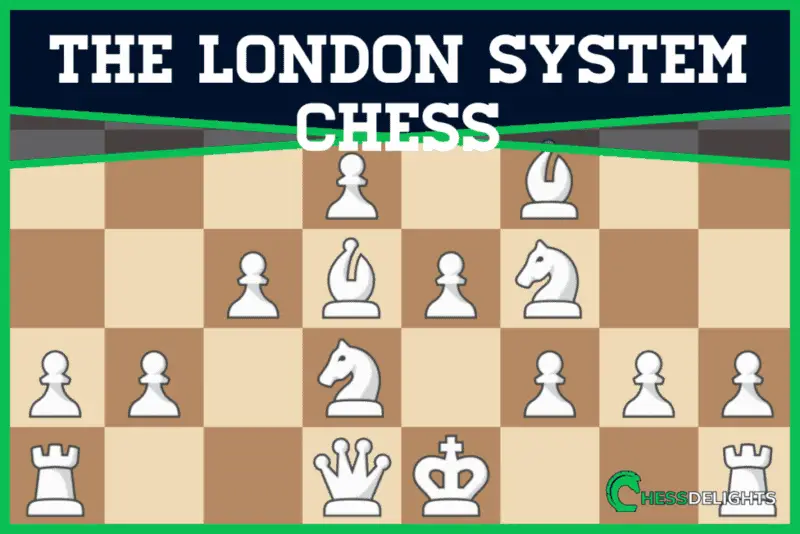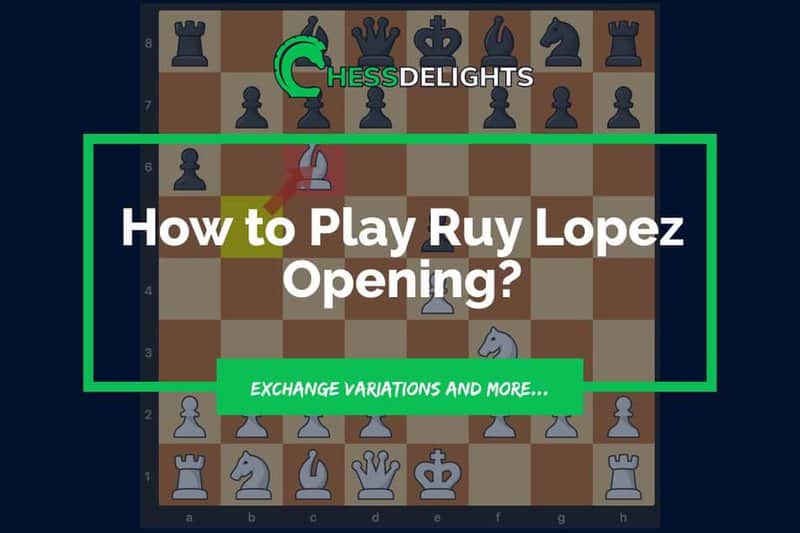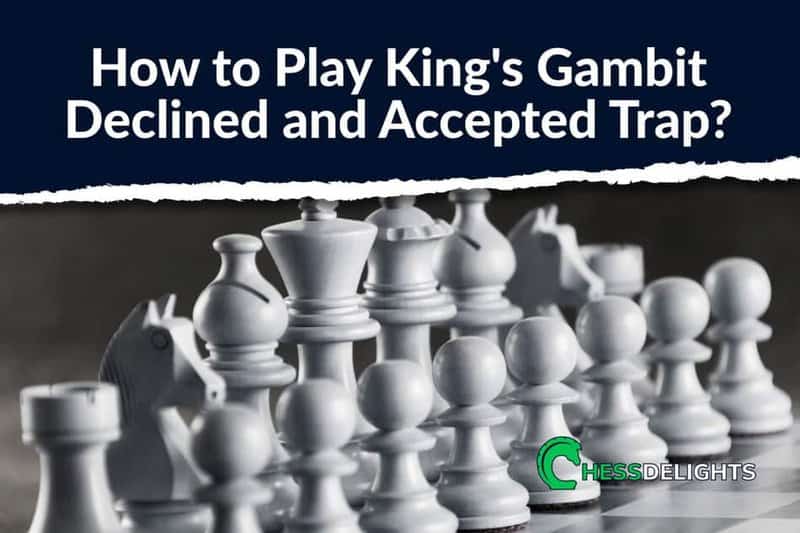Do you favor Knights vs. Bishop in chess? Or you think Bishops are better than Knights? When I was learning chess, I have this idea that Bishops are more valuable than Knights… 🙂
Because I feel they can do more damage than Knights, but when I started reading and learning more about chess, I immediately realized that that doesn't seem to be the case.
I know some of my friends prefer to keep Knights and exchange Bishops more often. And I see them win games with their Knights against opponents with Bishops. Well, if you want to find out which is better, Knight or Bishop, then this article may help you.
In this article, we are going to learn some of the things you need to know about Knight vs. Bishop.
Table of Contents
Is Knight more powerful than Bishop?
Knights are stronger and powerful during the opening and middle of the chess game, especially when there is a lot of pawns and other minor piece concentrating at one particular area of the chess board.
This is the place where Knights are very dangerous or lethal. 🙂
This is because Knights have an unusual or extraordinary L-shaped move, which makes a lot of beginners and intermediate chess players to have a really hard time planning their next move when they are against the opponent Knights compared to Bishops.
In my personal opinion, I think that Knights are much more tricky compared to Bishops, as Knights have the capability to triple-fork opponents' chess pieces in a complicated position on the chessboard.
Recommended Reading: If you want to learn about advanced chess strategies, read this guide.
Five strategic advantages of Knights over Bishops in Chess
1. Knights have eight square coverage
A Knight that can be positioned in the center of the board, which is protected by pawns, is usually stronger than the Bishop.
This is because the Knight can have an area of coverage that can cover an imaginary ring of eight actual squares in the chess board.
Anyone of the squares can lead to complicated positions or even a surprise chess forks.
And because of that, it cannot be easily blocked by enemies and also have an alternate square color for a better range of coverage.
On the other hand, a Bishop positioned at the center of the board protected by pawns covers an imaginary “X” pattern with a higher potential square covered than a Knight.
This is a significant difference because a centered Knight always covered eight actual chess squares…
A Bishop positioned at the center is usually have a higher tendency to be blocked from covering all of its potential area of range and hence making the number of the actual squares covered by Bishops to be more closely to that of Knights.
Which you should also keep in mind that a Bishop cannot cover squares at alternate colors, which reduces its area of coverage.
2. Knight's can be easily placed in strategic positions
A Knight which are placed at the superior position in the camp of the enemy, on tiles like e6, d6, d5, or e5, is usually mighty even as powerful as having a rook in your hand.
A Bishop can never reach the power of a Rook.
Due to the limited range of a Knight, it is highly recommended for you to place your Knight at the center of the board so that you will be able to have more coverage.
On top of that, the Knight that is placed on the center of the board would have all four quadrants of the board to be reached, but if you place your Knight somewhere else, then it's going to take some time to move your Knight from one quadrant to the other.
3. Knight's Coverage can beat Bishop's speed
A Knight has the capability to slowly cover all 64 tiles of a chess board, whereas Bishop can only quickly cover only half or 32 squares. Hence, the slow tortoise will eventually have extensive coverage and gets to cover all 64 tiles of the chess board, whereas the rabbit will only get to cover half of what the tortoise can cover. During the early or opening game to mid-game, coverage is essential, while during the mid to almost end game, speed plays a critical role in the victory. Besides that, it is also necessary for you to find an excellent outpost for your Knights. Holes in the opponent's pawn structure is an example of an excellent place for an outpost for your Knights.
4. Knight can perform a safe attack
A Knight is the only piece of chess that can safely attack all other pieces without endangering itself directly with a counter-attack from an opponent's chess pieces.
This provides an advantage to the player who has Knights as they can safely take away the opponent's chess pieces without having to worry about losing any of his chess pieces in return.
I consider this to be a huge advantage that most players have overlooked, and you should focus on getting that sneaky Bishop before the later part or end game…
So that you would not have many problems facing Bishops as the numbers of your pawns are getting lesser by that time.
5. A Knight is an excellent choice in Blitz Chess
In popular games or in blitz chess where your opponent is under the pressure of time, a Knight is considered to be more powerful due to their complicated movements…
And also any potential fork attacks are more challenging to be quickly calculated and predicted.
By forming a structured wall of pawns and have your Knights to be placed strategically at the right place and the right moment…
You will have no problems in eliminating the enemy's Bishops and your opponent will have no chance to stand against you as a player would be powerless if both of their Bishops have gone but still have to face your powerful Knights…
Which can be very tough in a regular chess match.
Things You Need to Watch Out For
However, you need to keep in mind that despite all the advantages of the Knights that have been listed above, if you fail to maximize the use of the Knights during the middle game, and you start to lose some of your pawns at a fast rate.
The strength of a Knight will begin to fade away as Knights are most active when there is a lot of Pawns blocking the path of the Bishops.
The chess game will also then be in favor of the opponent's Bishops instead of your Knights.
Just remember one thing, a decrease in the number of Pawns available in your possession means that the power of your Knights will also be decreased and in turn, shifts the control over to the opponent's Bishops.
By that time, the opponent's Bishops may also use their extremely long range attacks as well as taking full advantage of their forks to blow out or counter all your defenses.
One more thing for you to keep in mind is the importance of the position of every chess piece that you have.
Both Bishops and Knights are most powerful and almost the same in value when being positioned at the center of the board; however, a Knight on any of the sidelines is much weaker compared to a Bishop on that same spot.
This is all because the coverage of the Knight is limited to as a few couples of squares (two to be precise if on the corner), whereas a Bishop can reach across the whole board from one corner, which results in a total of seven squares that can be covered.
Hence, the moral of the story is to keep your Knights away from the sidelines to prevent the Bishops from getting an advantage in the chess game.
Is Bishop more powerful than Knight?
In the end, the game where you will only have a few pawns left, a pair of Bishop working together side by side, results in a disastrous double zone of death.
The Bishop pair of the opponent will surely have a pretty solid advantage if you are in this kind of situation and have two Knights opposing your enemy.
It may be a good indication for you to know that it is too late for you to take advantage of the situation.
Thus, during the end or middle game with just a couple of pawns that you have on the board, the value of a Knight is roughly considered as 2.8 with Bishops at 3.0.
During that point of time in the chess game, the value of two Knights is approximately worth about 5.6, and two Bishops are worth about 6.0.
That is almost the value of half of a pawn difference!
It's indeed a small difference, but it is enough for players to capitalize on! Especially if we are watching chess games played by the Grandmasters.
In a nutshell, the absolute value of Bishops against Knights is mostly depended on the number of the pawns.
Next, the value also depends on the time frame.
This means that whether you are in the opening game, middle game, or end game.
Lastly, the value also depends on the game position, whether it is “open” or “closed”.
To get started, read an important saying below:
Pawns are the soul of the game – Francois-Andre Danican Philidor
First Chess Scenario During the Opening Game
During the opening game, there will be a lot of pawns on the board, and the game position during that time is a closed position.
A closed position is one of the ideal game positions that you may find.
During this period of the chess game, Knights are stronger due to a high number of pawns and due to the Knight's complicated moves.
Consequently, the value of a Knight during this part of the game is high, roughly about 3.0 in value, and the value of the Bishops is only 2.8.
It's highly recommended to utilize your Knight at this point in time to eliminate the opponent's bishops so that during the end game, they won't be much of a threat.
Second Chess Scenario During the Opening Game
During the opening game, there will be again a lot of pawns available on the board except that the game position for this time is an open position.
The open position is a position that is less typical to happen in most chess games.
During this part of the game, the strength of Knights and Bishops are very much even. The value of both the Knight and Bishop is considered to be 3.0.
Third Chess Scenario During the Opening Game
During the opening game, there are only a few pawns on the chess board, and the game position is an open position.
This type of chess game position is the rarest game position that can be found.
During this part of the chess game, the Bishops are far more superior than the Knights as there will be a lot of open squares or pathways for a Bishop to strike due to a very low number of pawns that are supposed to be there to block the path of the Bishops.
The value of the Bishops during this part of the game is 3.1, and the value of a Knight is only 2.9.
The three scenarios given above lets you have an opportunity to have a little advantage over your enemy by utilizing your Knights while at the same time, the opponent's Bishop has a very limited square to cover.
If you do not take advantage of this situation fast (especially during the opening game), then you will risk yourself confronting superior, long range attacks of Bishops during the middle game.
First Chess Scenario During Middle Game
During the middle game, there will be several pawns available on the board, and the game position is the most commonly called closed position.
This type of game position is the type of a rare game position.
Due to more number of pawns available in this situation, the Knights are still active during this point of time, and the value of Knight at this time is 3.1, and the value of the Bishops is only 2.9.
Second Chess Scenario During Middle Game
During the middle game, the number of pawns available is very high, but the game position is an open position.
This type of game position is the type of chess game that is not so rare.
The value of Knights and Bishops are even valued at 3.0. The strength of Bishops and Knights are also even.
Third Chess Scenario During Middle Game
During the middle game, the number of pawns available on the chess board is only a few.
The chess game position is an open position, which is the most typical chess game position that you will ever encounter in a chess game.
In this part of the game, the Bishops are much stronger or powerful than the Knights with the value of a Bishop is valued at 3.1, and the value of Knight is only valued at 2.9.
Then, finally, we have come to the end game, where there will only be two scenarios.
First Chess ScenarioDuring End Game
During the end game, the number of pawns available on the chess board is still more.
Therefore, the value of Knights and bishops are even roughly about 3.0.
This is because if the pawns are still there, meaning that the other pieces are already being traded and, therefore, the strength of both Bishops and Knights are even.
Second Chess Scenario During End Game
During the end game, the number of pawns available on the chess board is less. Consequently, the value of bishops is more significant than that of a Knight who is valued at 3.1 and only 2.9 against that of Knights.
This is because just like we have been discussing earlier, the level of the pawn's number affects the strength and value of a Knight…
And the reason why Knight is being valued at such a low cost is due to the lack of pawn walls which can be the primary source of the power of a Knight.
Seize the outpost K5 with your Knight, and you can close your eyes and go to sleep as the checkmate will come by itself – Savielly Tartakower.
Bishops versus Knights Comparison Table
| Bishops have a significant advantage when the number of pawns on the board is lesser | Knights have a considerable advantage when the number of pawns on the chess board is more |
| Traps set by Bishops are more likely to be predicted by players | Knights have a complicated move which makes it more difficult to be anticipated by opponents |
| Pawns can easily block Bishop's area of coverage | Knight's area of coverage has alternating colors squares unlike Bishop's single color coverage |
| Requires a clear path for causing havoc to opponents | Requires a wall of pawns for an ideal attack on an enemy |
| Bishop's cannot safely attack a piece without endangering itself | The only piece in chess that can safely attack without risking itself |
| Bishops are stronger when positioned on a sideline | Knights are weaker when placed on a sideline |
| Bishops cannot change the color of the tiles in which it is located in | Knights can change the color of the square in which it is located in |
| Bishops cover a long distance in a single move | Knights covers only a short range in a single move |
| Bishops are ideal to be used during an open position | Knights are excellent to be used during a closed position |
| Bishops attacks can be easily blocked by using a pawn | Any chess piece can not easily prevent Knights attack |
| Bishops have the ability to pin a piece | Knights do not have the ability to pin a chess piece |
| A Bishop cannot control all chess squares | A Knight can control each chess square |
| It is very challenging to pin a Bishop | Knights are easier to be pinned |
In a nutshell, the Bishops and Knights have their unique advantages and disadvantages which their strength also depends on the situations and the number of pawns available.
Hence, it is up to you to determine which style of playing would you like to execute.
Would you instead form a wall of pawns to win, or would you instead try to pin your opponent so that they can experience an awkward position to work with where they can't afford to lose a chess piece?
The most important thing that I would recommend to you is to keep playing with different levels of chess players as various kinds of people have different types of personalities, which can be analyzed directly in their chess playing style.
By having to experience a lot of varying playing combinations and styles, you will gain access to a whole lot of new and different strategies…
So that you will always have an arsenal of strategy lined up in your mind to solve every problem that you may encounter later on during chess tournaments, chess matches, or even just a regular chess match with your family member.
Main Key Points
- Predictability of Pieces
- Bishops are generally more predictable than Knights, especially for experienced players.
- Value in Different Phases of the Game
- Middle Game & Opening:
- Knights hold higher value due to:
- Limited movement of Bishops because of more pawns on the board.
- Knights can jump over pieces and occupy different colors.
- Knights hold higher value due to:
- Middle Game & Opening:
- Closed Positions
- Favor closed positions to create a V-shaped pawn structure.
- A well-placed pawn formation can:
- Block opponent’s Bishops.
- Capture opponent's pieces, particularly Bishops.
- Advantages of Knights
- Knights can evade capture more easily than Bishops due to their jumping ability and movement across different colored squares.
- Trading Pieces
- Consider trading your Bishops for your opponent's Knights if:
- You can establish a strong defensive pawn wall.
- Aim to have:
- Two Knights against one of your opponent's, increasing tactical options.
- Consider trading your Bishops for your opponent's Knights if:
- Creating Tactical Opportunities
- Use a V-shaped pawn structure:
- Sacrifice one or two Bishops to capture both of your opponent's Knights.
- Look for opportunities to:
- Execute surprise forks with your Knights.
- Force doubled pawns on your opponent, limiting their Bishop's mobility.
- Use a V-shaped pawn structure:
- Strategic Goals
- The goal is to turn the game in your favor with a well-timed fork or tactic.
- Keep in mind that doubled pawns can:
- Restrict the movement of your opponent's Bishops.
- Open pathways for your Knights to create threats.
Wrapping Up
There you have it, and I hope you now have a better understanding when it comes to comparing which is better Knight or Bishop.
Always keep in mind that experience is the best teacher in the whole universe, and the best thing about knowledge is that it can seek no matter who you are.
Don't be afraid of having a match against other pro players out there because you only need to remind yourself that you play that match with them because you want to seek experience, not victory, not yet.
Besides that, every pro player out there was once a beginner, so have fun playing with them, and of course, it's going to be difficult, but you need to remind yourself that you need time and experience to progress to the next level.
Rome was not built in a day! So for every match that you lose, keep on learning until you discover your strengths and weaknesses.
Once you have discovered those things, you will have less to no problems in winning every single match with anyone as by that time comes, and you know that you have mastered the art of chess.
Recommended reading: If you want to learn important chess tactics, read this article.







